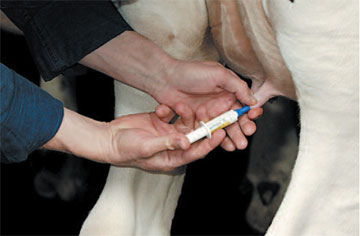Mastitis is the disease that causes the greatest economic loss in dairy farming and is one of the most common diseases in dairy cows. Almost all bacterial or fungal pathogens have the opportunity to invade the breast tissue, causing infection and causing mastitis. There are two main types of cow mastitis, clinical and subclinical.

Clinical mastitis, it is an inflammatory reaction of the body to infection, causing obvious milk abnormalities (milk color changes, fibrous blocks, etc.). As the inflammation progresses, the breast also appears red, swollen, hot, and painful; mild or moderate mastitis occurs only with local clinical symptoms. If inflammation causes systemic symptoms, fever, anorexia, shock, etc. are considered to be severe mastitis. If the onset is acute, the symptoms are severe and it is called acute severe mastitis. Severe mastitis often has serous secretions, also known as clear water or yellow water.

Subclinical mastitis, also known as recessive mastitis, refers to a type of mastitis that has an infection but does not cause obvious clinical symptoms. It is characterized by no abnormalities in the breast and milk, and the physicochemical properties and bacteriology of the milk have changed. The pH of the milk is above 7.0, which is alkaline. The body cells are more than 500,000 ml, and the number of bacteria and the conductivity value are increased.
What should we pay more attention on choosing plastic pharma bottle
View More >How Can Plastic Vitamin Tube Keep Dry Environment
View More >Effervescent Tube with Spiral Desiccant Closure
View More >Copyright © Shijiazhuang Xinfuda Medical Packaging Co., Ltd. All Rights
MAKE AN ENQUIRY